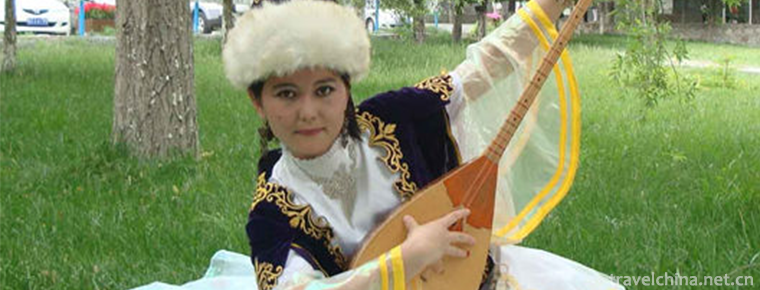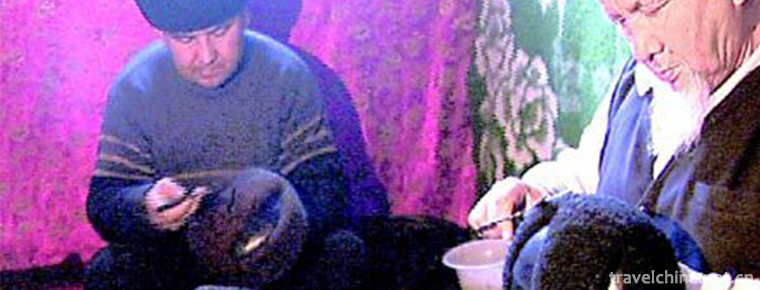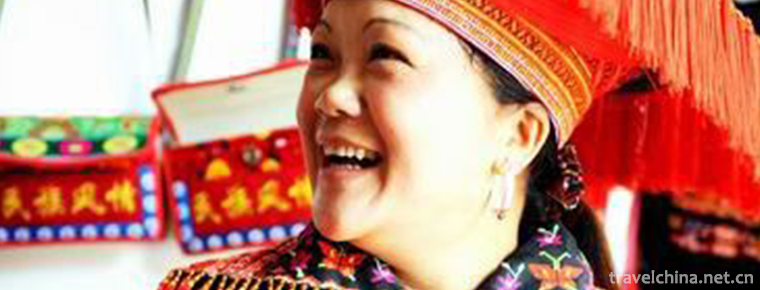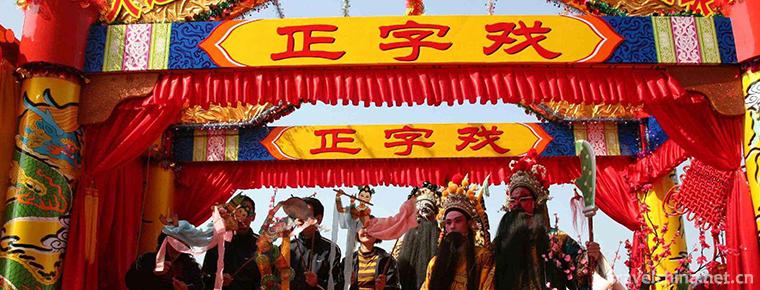Sunan Wenshu Temple Scenic Spot
Sunan Wenshu Temple Scenic Spot
Pictures From:
brief introduction
Wenshu Temple in Qifeng District, Sunan County, Zhangye City, Gansu Province, was built in the Northern Wei Dynasty and is a well-known ancient temple. It is 26 kilometers away from Jiayuguan City, 25 kilometers from Jiuquan City, 60 kilometers from Yumen City, 200 kilometers from Zhangye City, 400 kilometers from Dunhuang City and 500 kilometers from Subei County. The Manjusri Temple is a Tibetan Buddhist Temple worshipped and supported by various Tibetan tribes in Dongna. Kangle Temple has a history of more than 900 years. It is one of the three ancestor monasteries in Kangba area. It is a Ningma sect (commonly known as the Red Sect) monastery. There are 13 sub-monasteries under the jurisdiction, totaling more than 3,000 monks.
Sola Living Buddha has "reincarnated" to the 17th century. It has a long history in the history of Tibetan Buddhism in China. It is one of the "reincarnated" living Buddha families with the most reincarnation, and also one of the highest Dharma status living Buddhas.
Soladan Benima, a living Buddha, was born at 9:00 on December 15, 1963, in the year of the tiger, which lasted sixteen years in Tibet. He was born in Tangnaihai Grassland, Xinghai County, Qinghai Province. When he was born, rainbows and other auspicious signs appeared in the sky. Soon after, Guru Gexiu Aarou, a local expert who visited and identified "reincarnated spiritual child", and other masters thought that he was "reincarnated spiritual child". Then through a series of procedures, it was further confirmed that Gerijiasai, Vice Chairman of Qinghai Buddhist Association, Jinmei Pengzige, King of France, and Lang Zhinima, Master of Buddhism, were "reincarnated spiritual child" of the 17th Grizassinima in Kangle Temple, Seda County, Ganzi Prefecture, Sichuan Province. On October 25 of the 16th anniversary of the Tibetan calendar, the monkeys were invited to the Kangle Temple (full name: Changlong Temple, Chiqin Treasure Garden, Ajiao Kangle) to hold a solemn bed-sitting ceremony, and to "sit on the throne of the fearless lion and accept the right of all masters".
Because of historical reasons, he stopped practicing in his second year of "sitting in bed", forcing him to stop practicing and go back home to take advantage of every possible opportunity to study classics and go to school. In the early 1980s, he was recruited back to the original Kangle Temple, received full precepts, received instructions and inheritance from the teachers, systematically studied Buddhism, and graduated from the "Five Mings" Buddhist College of Ganzi Labrang Temple. During this period, he chose Tibetan medicine and obtained the diploma of correspondence university of Lhasa Tibetan Medical College. At the same time, he practiced in the Grand Successful Monastery of Ganzi, taught the Grand Successful "Zaoqin" precept and received the true biography of Tantra Sect. Since the beginning of the 1990s, for eight years, as a disciplinarian, he has been carrying packages, reciting "True Words" and conceiving with his heart. He has traveled all over the Qinghai-Tibet snow plateau, Qaidam Basin, Qilian Mountain pilgrimage sites, worshiping mountain gods, walking through 324 cemeteries, practicing 540 holy springs and practicing bullet holes nearly a hundred times. During this period, Sanye Temple Shenshan Lotus Peanut Master once practiced the "pair of Jingquan" meditation for three months, Noyan Hongsa in Qaidam Basin closed for one year and seven months, Caihan Taolugai Temple closed for reciting "Ganzil", and the center of Qinghai Lake meditated for one month, holding the recitation of "Lubujing", walking around Qinghai Lake and other lakes. In short, after more than 20 years of conscientious practice and traveling around the world, Soladan Benima Living Buddha has developed his hollow vision. Nima Crown's Defense Council. Soladan Benima Living Buddha won the "Nima" crown. Kangle Temple held the ceremony of "Successful incarnation of the Danbenima Living Buddha, bestowed on the fearless Dharma seat Bureau of all Buddhist beings" to elevate the thirteen treasures to the highest level of "Jinchi" (Dharma seat), formally becoming the seventeenth Lama such as Sola Living Buddha. Lama means noble and is the highest tutor and teacher of this department.
According to legend, in the first year of Huichang in Tang Wuzong, 841 A.D., Hui Ji, a Japanese monk, took a statue of Guanyin Bodhisattva, which he had invited at Wutai Mountain, and returned home by boat. When he sailed to Nanxinluo Reef in Putuo Shandong Province, Zhejiang Province, he was surrounded by hundreds of iron lotus flowers suddenly appearing on the water. Hui Ji realized that it was Guan Shiyin Bodhisattva who refused to leave China for Japan, and immediately prayed and promised that he would not go to Guanyin. Courtyard ", the lotus flower retreats face to face. Huicalyx with the statue of Guanyin Bodhisattva, passing through Shiren Mountain, once rested in Wenshu Temple. In order to commemorate the refusal of later generations to go to Guanyin, Putuo Monastery was built in Anan, which is today's Manjusri Monastery. Five thousand-year-old Ginkgo biloba trees in the temple are known as living fossils. The Manjusri Temple under the shelter of Dengyin covers an area of more than ten mu. The two existing stone inscriptions in the temple, inscribed in the Inscription of Steles, were built in the four years from Yuan to Zhengzheng (1344 A.D.). It has a history of more than 600 years. During this period, he had undergone several major overhauls in the first year of Chenghua in Ming Dynasty (1465 A.D.), Dingsi in Hongzhi (1498 A.D.), Xinmao in Wanli (1591 A.D.) and thirty-four years of Qianlong in Qing Dynasty (1769 A.D.).
Wenshu Temple is situated in the depths of Baiyun, surrounded by peaks and rivers, surrounded by bamboo trees and waterfalls and springs. It is an important part of Shirenshan Scenic Spot. The temple is composed of the main hall, the crossing hall and the partial hall. It is said that Sakyamuni, Maitreya and Damo, who were apprentices of the Virgin Mother of Manjusri, were named after the local people and the incense was very popular for a time. But what really makes Manjusri Temple famous is the five ancient ginkgo trees in the temple.
Ginkgo biloba, also known as white fruit and Gongsun tree, is dioecious and has strong vitality. It is called "living fossil" in the biological world. The Ginkgo Trees in Wenshu Temple are three males and two females. The tree age is over one thousand years. The tree height is between 25 and 40 meters. Their branches are tall and straight, and the green leaves are whirling. For example, they open huge green umbrellas and cover the ground with thick shade. Snow pressed on the branches, a piece of jade trees Qionghua, adding a glimmer of scenery to the primitive temple. Afterwards, accompanied by Guan Shiyin in the temple, he spent thousands of years of sad and happy time, and grew into a towering figure. These big trees, the lowest is 35 meters. Among them, the largest tree crown is 43 meters high, chest circumference is 6.85 meters, which requires several hands to encircle, which is surprising, but especially surprising is that there is a 10 cm breast hole, through which it can clearly see the trunk was sawn off a 1.7 meters long, 0.8 meters wide board gap, the lower part of the sawdust left with broken hands is still visible. How can a big wooden board be taken out of the middle of a bark trunk? It is said that this is Lu Ban's Shengong. And the smallest one, the tree circumference is more than 5 meters. The whole group of Ginkgo biloba twigs misplaced, branches and leaves connected, lush, shade the sun, clouds and mists all day, is spectacular.
Overview of development
According to the historical records of Wenshu Temple, the grottoes of Wenshu Mountain were first excavated in the Northern Dynasty, and the temple was founded in Zhenguan. It has a history of more than 1500 years. After excavation, architecture, statues and paintings in Tang, Song (Xixia), Yuan, Ming and Qing dynasties, in the peak of incense, there were more than 360 buildings in front and back hills, more than 70 courtyards, more than 70 caves and caves, and cigarettes were cigarettes everywhere. Halls, pavilions, towers and pavilions were scattered all over the front and back hills. Since the Northern and Southern Dynasties to the Sui and Tang Dynasties, Tibetan and Han Buddhism, Taoism and other religious arts have gathered together. It has a history of about 1500 years. Its artistic style is comparable to that of Mogao Grottoes, commonly known as "Little Western Heaven". According to legend, Manjusri Bodhisattva was named for its manifestation here. The third Dalai Lama came here to worship. Thousand Buddha Cave, Ten Thousand Buddha Cave and Wonderful Camel Peak. Ancient buildings are mostly built on the top of strange peaks and mountains. In May 1992, the government of Qifeng District of Sunan County and the people's government of Qiwen Tibetan Township of Qifeng District successfully held the first cultural temple fair of Wenshu Temple, which opened the prelude to the development of Qifeng's tourism industry. Under the strong support and guidance of the district office and the township government, herdsmen actively invested in large-scale tourism. From the beginning of the simple tents, they gradually developed into a building structure, with 15 fixed scenic spots with local ethnic characteristics. In the late 1980s, religious people in Jiuquan, Jiayuguan and other places came to work and invest, repaired some temples, and carried out religious activities within the scope of national religious policies and laws and regulations. In order to standardize the management of tourism and improve the tourism quality and grade of scenic spots, in August 1995, the Sunan People's Government approved the establishment of the "Sunan Yugur Autonomous County Wenshu Temple Tourism Administration Office", which belongs to public institutions, is under the management of Qifeng District Public Office, and is specifically responsible for the management and management of scenic spots. Water, electricity, roads, communications, various buildings and other infrastructure in tourist attractions have invested more than 30 million yuan. There are more than 150 managers, 5 explainers, 3 human scenery 42 temples, 3 grassland natural scenery and 1 natural wonder. Wenshu Temple Cultural Temple Fair was successfully held for 14 sessions, with 700,000 visitors (times), including 0.15 million foreign visitors (times), and tourism revenue totaled 12.5 million yuan. In 2001, the fifth batch of the State Council was promulgated as the national key cultural relics protection units.
In 2006, it was rated as the national 3A tourist attraction.
In 2011, it was promoted to the national 4A level tourist attraction.
Scenic spot
Qianshan Scenic Spot
The scenic spot in front of Wenshu Temple is 23 kilometers away from Jiuquan and Jiayuguan. From the Southern and Northern Dynasties to the Sui and Tang Dynasties, Tibetan and Han Buddhism, Taoism and other religious arts have gathered together. It has a history of more than 1500 years.
The grottoes of Wenshu Temple were excavated during the reign of Taining, Emperor of the Ming Dynasty in the Eastern Jin Dynasty. The whole area is divided into two regions: the front and back mountains. In the early years, there were more than 360 ancient buildings, more than 70 courtyards and more than 70 Grottoes in the front and back hills. Most of them were built on strange peaks and mountains. They were magnificent and mysterious. They can be called wonders. They are commonly known as "Little West Heaven". There used to be a folk saying: "First look at Manjusri, then Dunhuang", from which we can imagine the old glory of Manjusri Temple Grottoes.
Wenshu Mountain is divided into front hill and back hill, and is divided into East and west two ditches. In the East is Hongmiaogou, commonly known as Qianshan. In the front hill, we will see Wanfo Cave, Qianfo Cave, Manshu Bodhisattva Hall. The Baizi Tower, Guanyin Tower and Yuhuang Pavilion in front of us are ancient buildings. In the west is Houshangou, and in the ditch there are three branches: south, north and middle. The longest one is the middle. In 1981, the Wenshu Grottoes was declared a provincial cultural relic protection unit by the Gansu Provincial People's Government. In 2001, the fifth batch of the State Council was promulgated as the national key cultural relics protection units.
Post Hill scenic spot
In the past, there were complete temples, temples and temples, wooden pavilions and caves. Buddhism and Taoism coexisted. The scale was huge. The Hill bottom was to the top, and the buildings were numerous and the caves were densely distributed. Existing ancient Buddhist caves, Hongjun Cave, Wenshu Cave and other unique grottoes, ancient Buddhist pagoda, in addition to Afghanistan and other Arab countries, is rare in China, in 2001 was announced by the State Council as a national key cultural relics protection unit. Some ancient buildings, such as Sleeping Buddha Hall and 500 Arhats Hall, have been restored and have become new landscapes, especially the vivid image of 500 Arhats Hall. In Hexi alone, tourists come in endlessly. While you are looking for ancient attractions, you can also appreciate Tibetan, Yugu, Mongolian and other ethnic customs, and even make you reluctant to return.
Luo Han Tang
Five hundred Arhats have been bred from eighteen Arhats. They can be seen in many famous temples and temples in China. They are very popular and popular among monks. Arhat is much closer to the people than Buddha and Bodhisattva. Five hundred Arhats are widely worshipped. He is different from eighteen Arhats. The latter is a real person, but more than five hundred Arhats belong to none. Five hundred Arhats are too many to be true. The Origin of Arhat Hall
As for their origins, some Buddhist sutras say that they were 500 disciples who followed Sakyamuni to listen to Dharma and preach. Some say that they participated in the first gathering of Sanzang or the fourth gathering of Sanzang's 500 biqiu (monks). Others say that their predecessors were 500 geese. Once the king of geese fell into the net by mistake, the hunter was about to kill, and a geese tore its heart and lungs in front of the king of geese. The wild goose also circled in mid-air, and the hunter was so moved that he released the wild goose king, which is Sakyamuni, and 500 geese, which is 500 Arhats. Besides, they were 500 robbers inspired by Buddha, laying down their butcher knives and becoming Arhats. The first two statements are more credible, while the latter are just propagating the appeal of Buddhism.
Lohan Hall
In fact, 500 Arhats are different from 18 Arhats. The latter are real people, while 500 Arhats are mostly fictitious. The number of five hundred is too much to be true.
In the Southern Song Dynasty, Gao Daosu, who had a good deed, tried to "implement" them one by one, and carved a famous stele of 500 Arhats in the Qianmingyuan of Jiangyin Army. Thereafter, the fake went all the way, and the five hundred Rohan titles of Luojiantang were all used as tablets. These names are recorded from various sutras, including Buddha's time in the world, and also after the loss of life. Despite the lack of any evidence, it is well received by monks and customs.
Arhat is much closer to the people than Buddha and Bodhisattva. Five hundred Arhats are widely respected. The most famous ones are Biyun Temple in Beijing, Baoguang Temple in Chengdu, Xiyuan Temple in Suzhou and Hanshan Temple, Guiyuan Temple in Wuhan, Longhua Temple in Shanghai, Qiongzhu Temple in Kunming and Hualin Temple in Guangzhou.
Five hundred Arhats have different features and are not identical. It is not easy. This can not but admire the rich imagination and superb skills of sculptors. Luohan Hall is generally built on the west side of the back hall of Buddhist temple, and it is an independent courtyard. The establishment of this hall will cost a lot of money and resources, and it will only be called the Chada Temple. Luohan Hall is generally built in the shape of "Tian" on the plane. The central hall is dedicated to Buddha III and Guanyin of Thousand Hands. Because there are too many 500 Arhats to distinguish, their foreign names, let alone vulgar people, even the old monks in the hall may not be able to remember them one by one. This makes some people take advantage of the opportunity to crowded into the Lohan Hall, mixed up among them, hard-acting "Lohan" to make a name for themselves.
So this man who has many honours in the night also has a face of pockmarks, but the emperor's long pockmarks are also remarkable. The statue's pockmarks are in five groups, so his face is covered with "plum blossoms". Beijing Biyun Temple, the 444 worshippers in Luohan Hall, wearing armor and robes and boots, is really unlike Luohan. It is entirely a military image of a king or marshal. This Luohan Party was built in the reign of Qianlong. This "Emperor Luohan" is the statue of Qianlong himself. In the Luohan Hall of Hualin Temple in Guangzhou, there are also Luohan statues of Emperor Qianlong.
The most vivid and vivid 500 Arhats are the Qiongzhu Temple in Kunming. Here the shape of Arhats is very changeable, many Arhats are like monks and non-monks, Buddhas and non-Buddhas, literary and military, old and young. Kind bodhisattvas, angry vajrayana, meditative monks, barefoot walkers, and abdominal Midas are all vivid and vivid. Among them, a large number of "civilian Arhats" have been created, including vagrants, peasants, warriors, Confucian scholars, elders, hawkers, woodcutters, poor people, and even the image of emperor beggars sitting on an equal footing, people and animals talking heartily. In addition, there are also folklore figures such as the long-handed Arhat, the long-legged Arhat, the long-eyed Arhat, the multi-eyed Arhat and so on. These works were created by Sichuan sculptor Li Guangxiu during the Guangxu period in the late Qing Dynasty. Moreover, Li Guangxiu also molded the Abbot Mengzhu Buddha, the elder monk of Qiongzhu Temple, himself and several disciples into the Luohan group, which is really courageous and courageous. Interestingly, there is also a Lohan of Jesus here, and there is also an Italian traveler and Christian Marco Polo's Lohan statue at Hualin Temple in Guangzhou. These fully demonstrate the inclusiveness of Chinese Buddhism.
It is said that Bi Buddha is always compassionate. His name is Ayiduo, which means "incompetent to win". According to Buddhist sutras, Maitreya was born in ancient India, a Brahman family in Boronia. Maitreya belief has long been popular in China. In the Western Qin Dynasty, the painted image of Maitreya (Bingling Temple Grottoes in Gansu Province) appeared. After the Five Dynasties, there was also the statue of the smiling Maitreya Buddha among the people. One snipe said, "Maitreya, who is divided into tens of billions, is always present and unconscious. "When people see this image, they forget their troubles without being infected by his open smile.
The statue of Maitreya Buddha on the left is a Buddhist Buddha (also known as the Buddhist Heaven). He was originally a God in Brahmanism deification, and was later absorbed by Buddhism as one of the heavens protecting Buddhism. The right side of Maitreya Buddha is Guan Gong. Later, Buddhism regarded him as one of its own Buddhist emperors.
In the Daxiong Palace of many Chinese temples, Sakyamuni Buddha stands on the left for the Oriental Liuli Pharmacist Buddha. In Buddhism, there are still twenty heavenly chapters to guard Buddhist Dharma. Among them, the ghost-son-mother is the most touching thing. The ghost-son-mother-god is commonly called ghost-son-mother in the Chinese translation of Buddhist sutras. It is also known as the joy mother, the love mother and the ghost-son mother, who were originally the ghost-daughter of the Taoist religion. They hunt other people's children every day, but they are very The Buddha hides his young son when he goes out by the ghost mother. When the mother of ghosts returned without her beloved son, the Buddha let her compare her heart with herself, preach with karma and revenge, move with affection and know the reason, and indeed inspire the mother of ghosts, so that she could make a decision about the past and repent of herself, and believe in Buddhism as the God of protecting Buddhism.
Twenty-four kinds of offerings for Bodhisattvas represent gentleness and kindness, knowledge and virtue, and bring people joy and sorrow.
Manjusri Bodhisattva is called Manjusri Shili, sometimes Manjusri Shili, Yimde auspicious. It is said that many auspicious omens appeared in his family at the time of his birth, which was named after him. Manjusri was born in a Brahmanic court in the ancient Indian Servant State. After the destruction of Sakyamuni Buddha, Manjusri Bodhisattva marched in the shape of a boy on Mount Wutai to speak of Taoism, so Mount Wutai became a holy place of Buddhism. In Mahayana Buddhism, Manjusri Bodhisattva occupied a high position. He was the head of many Bodhisattvas and was considered as the son of the Buddha King. Therefore, he was often called King of Dharma, and he was the embodiment of wisdom.
The eleventh aspect of Guanyin, alias Daguang Puzhao Guanyin, the honeymoon Mercy King Kong, is one of the six Tantra Guanyin. He has eleven faces. The eleventh aspect corresponds to the original image of Guanyin plus ten faces, which are considered to be twelve-sided by Buddhism, but also called eleven-sided Guanyin. The images of eleven-sided Guanyin are recorded according to various scriptures. There are differences. Puxian Bodhisattva Vatican is called "Sanmanduoba'Dala". That is to say, universal virtue means Buddhism.
Ticket Price
Adult votes: 42
Business Hours
8:00-18:00
Pictures From:http://bbs.fengniao.com/forum/8920403.html






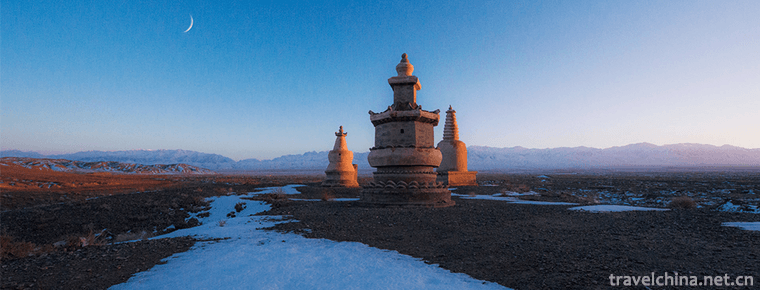
-
Xiantan Mountain Hot Spring Town
Xiantan Mountain Hot Spring Town is located in Xiwangzhuang Town, Zaozhuang City, Shandong Province. It is on the west side of Zaoji S345 Highway, south of Taierzhuang Ancient City, and on the side of.
Views: 205 Time 2018-12-22 -
Gell
"Gar", which means singing and dancing in Tibetan, also means "music and dance", because performing Gar has accompaniment of special instruments. On the staff roster of the Tibetan.
Views: 316 Time 2019-04-30 -
Kazakhstan 62 Kwohner
Kazakhstan 62 Kwohner 62 Kwohner is Kazakh folk classical music, which means "62 suites". It is a comprehensive art mainly composed of instrumental music, accompanied by folk songs, dances,.
Views: 207 Time 2019-05-02 -
Good luck treasure
Haolaibao is a kind of Chinese Mongolian folk music, singing in Mongolian. Haolaibao means "alliteration" in Mongolian, that is, the first syllabic rhyme of each line of lyrics, so it is als.
Views: 348 Time 2019-05-02 -
Naxi Dongba Painting
Naxi Dongba painting is an important part of Naxi Dongba culture and art, which is spread in the ancient city area of Lijiang City and Yulong Naxi Autonomous County of Yunnan Province. During the ritu.
Views: 135 Time 2019-06-07 -
Uygur Karakul fetus
There is a folk song "Turpan grape Hami melon, turtle's lamb a flower". Shaya Uygur Hatters use local lamb skin to make various hats, such as Duhuawa, Wuniqie and Dulikun, for people to buy..
Views: 188 Time 2019-06-26 -
Yao Costume
Yao people used to call themselves "Guoshan Yao", "Hongtou Yao", "Dabanyao", "Pingtouyao", "Blue Indigo Yao", "Shayao" and "Baitou Yao&.
Views: 294 Time 2019-07-11 -
Orthographic drama
Zhengzi opera, originally known as Zhengyin opera, is singing in Zhongzhou Mandarin. It is an ancient and rare opera with many voices. In the early Ming Dynasty, one of the Southern Opera was introduc.
Views: 119 Time 2019-07-25 -
Beijing Wuzi University
Beijing Wuzi University is a public institution of higher learning which is characterized by logistics and circulation, based on economic disciplines, with management disciplines as its main branches,.
Views: 313 Time 2019-09-06 -
Da Zang Temple
Located in the north of malkang County, dazang temple is about 500 kilometers away from Chengdu City and is located in the deep mountains above 3000 meters above sea level. .
Views: 243 Time 2020-11-07 -
Population of Yibin
By the end of 2019, the total registered residence of Yibin was 5 million 515 thousand, 8 thousand less than the end of last year, and the registered residence population urbanization rate was 37.87%, which was 2.28 percentage points higher than that .
Views: 147 Time 2020-12-18



